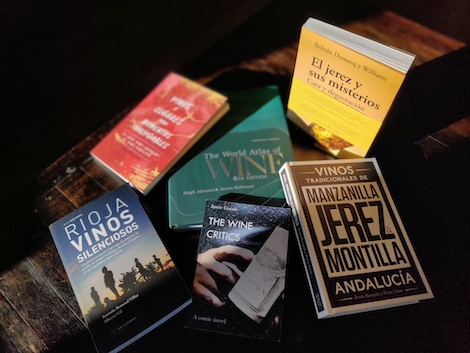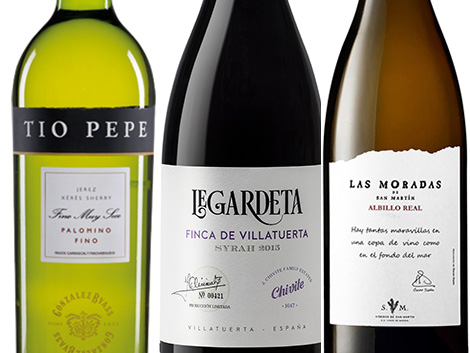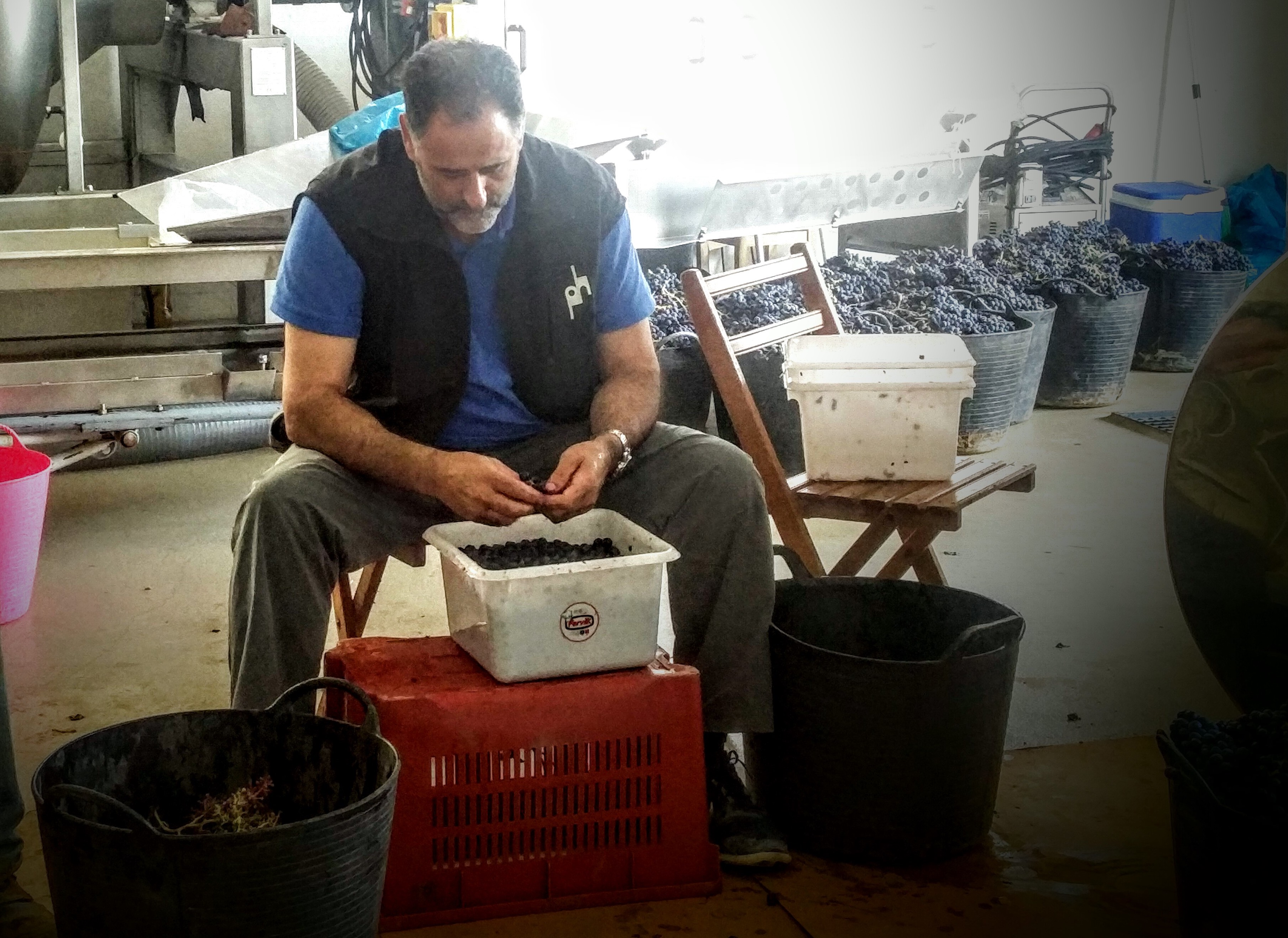
Although 38.2% of Spaniards confess to never or almost never reading, we at Spanish Wine Lover are confident that our readers do not belong to that group and recommend a handful of books which are as interesting as they are diverse about our favourite drink.
Fortunately, and always taking into account that we are talking about a very specialised sector, 2019 proved to be a good vintage for wine books, especially in the Spanish language, so we have decided to review some of the most interesting ones in Spanish plus a couple of foreign titles.
The books reviewed by Amaya Cervera appear with her initials A.C.
Rioja Vinos Silenciosos
Antonio Remesal and Alberto Gil
Despite being one of the world's great wine regions, Rioja has not yet managed to fully expose the complexity and diversity of its villages, vineyards and the people who work them. Gradually, and with the rise of a new generation of small producers who are eager to explore the origins and the vineyards, a new reality is beginning to emerge, which is what Antonio Remesal and Alberto Gil portray in their book.
With almost two hundred reviews of growers and producers, many of them unknown even to professionals, Rioja Vinos Silenciosos puts the spotlight on the people, with names and surnames, who keep the Land of a Thousand Wines alive.
Remesal, a civil servant in the local authority's Viticulture Service, and Gil, a wine journalist with 25 years' experience at La Rioja newspaper, have divided the DO Rioja into eight regions that surpass the three official zones, using the region's geography, valleys and rivers to explain the different identities that coexist therein. The maps at the beginning of each chapter, written and drawn by hand, are clear and precise and allow the reader to visualise each of the regions, with their rivers, mountains and roads.
The book, which includes forewords by British Master of Wine Tim Atkin and ice cream chef Fernando Sáenz (National Gastronomy Award), is also a handy guide to the region, with plenty of helpful tips on restaurants, accommodation and places to visit.
Editorial Pepitas, ISBN 97884121202.
Language: Spanish with pull quotes in English.
Buy it from Pepitas de Calabaza, Amazon and from many stores across Spain for €23.65
Jerez, Manzanilla & Montilla - Vinos Tradicionales de Andalucía
Jesús Barquín and Peter Liem
Following the success of their first book, published in English in 2012, Jesús Barquín and Peter Liem go one step further in this exhaustive volume about the traditional wines of Jerez, and to a lesser extent, Montilla, which will undoubtedly become a valuable source of reference for sherry-loving amateurs and professionals alike.
As well as outlining a concise history of the area and its wines and explaining in detail the styles and production methods, Barquín and Liem devote a chapter to the " alleged Palo Cortado mystery" and reproduce a shorter version of the profiles of historical producers and wineries that were included in the English edition.
Beautifully presented —albeit with a typeface that is a tad too small— with a foreword by renowned Spanish sommelier Josep 'Pitu' Roca and photographs by Estanis Núñez, the contribution of expert Álvaro Girón is particularly noteworthy, especially in the chapter "Knowing the Past, Interpreting the Present, Imagining the Future". These are a dozen pages of constructive criticism and sound analysis of the so-called Sherry Revolution in an area that is widely talked about but whose sales and economic weight are in decline and where "local awareness of terroir is purely symbolic".
Before the extensive final bibliography, which illustrates the meticulousness of this book, we find another particularly interesting chapter, which examines the most exciting new developments in the region, such as the recovery of varieties, en rama bottlings, vintage wines, or the unfortified soil-driven wines that emerged in the wake of Navazos Niepoort 2008. With a certain degree of caution —"the most likely hypothesis is that these wines are in the hands of the usual suspects: those of us who can't stand the idea of not tasting them"— the authors don't abandon the hope that one day these green shoots will turn into healthy and consolidated vines.
Abalon Books, ISBN 97884120967-1-2.
Language: Spanish.
Buy it from FNAC or Amazon (€28).
El jerez y sus misterios, Cata y Degustación
Beltrán Domecq y Williams
A member of one of the most illustrious and long-established wine dynasties in the world, Beltrán Domecq y Williams has sherry and good manners in his DNA. His book, a revised and improved re-edition of the one he wrote in 2011, focuses on technical aspects of tasting, both in the winemaking process and in organoleptic tasting.
Despite including a few algorithms to explain the composition of the soleras —nobody said sherry was easy to understand—, Domecq intersperses the text with fascinating anecdotes of his professional career, which began at Williams & Humbert (his mother's family bodega) and continued at Domecq (his father's family estate) before becoming president of the Regulatory Council in 2012.
There are also a few delightful pages describing his personal experiences, such as his childhood summer stays in La Barrosa, at the house of his grandfather, the British vice-consul Guido Williams, where the BBC was broadcast and where, from an early age, he was offered "a glass of the decanters containing fino and oloroso (at room temperature) which were served from one o'clock".
Pairings and recipes also have a place in Domecq's work, for which he confesses to having drawn on the wisdom of his wife, Neahn Haynes, who trained as Cordon Bleu.
The last 70 pages are a glossary containing the rich lexicon used in the bodegas of Jerez, with peculiar words like espirriaque (must for distillation) or the multiple adjectives used to describe the casks, including bota descarada (brazen in English, a cask with one head higher than the other), gorrona (scrounger, a cask which holds excess must or wine) or condenada (condemned, a cask which is used as support of others).
Vinos de Jerez, ISBN 978840912964
Language: Spanish.
Buy it from the Consejo Regulador store or from Amazon for €25.
Vinos y Lugares para Momentos Inolvidables, La Guía para Escoger el Vino Perfecto
Mariano Fisac
In his book Galicia Entre Copas, published in 2015, Fisac provided a platform for small-scale wine producers from his homeland. This time round, in Wines and Places for Unforgettable Moments, the writer suggests a trip visiting 20 restaurants and bars in Spain where wine enjoys a special status.
Fisac, who confesses that before going to a restaurant he always checks first the wine list and then the menu, writes about fine dining spots such as El Celler de Can Roca, Atrio, Casa Marcial or Martín Berasategui —although a good selection of everything is expected in top restaurants, disappointments sometimes occur, especially in terms of the wine.
Just under half of the reviews feature more modest but by no means less interesting places such as Taberna der Guerrita, A Curva, Angelita and Monvínic. In each of the 21 reviews, Fisac also introduces the sommelier briefly and selects half a dozen wines which are probably unfamiliar to the average consumer but nevertheless represent the honest, terroir-based style that the author defends.
After a chapter on pairings where the author insists on the importance of drinking wine in good quality glasses and in good company, he devotes a few pages to recommending shops "run by people who really love wine and who are capable of transmitting it to their customers". As an epilogue, and aware that it is very difficult to include all the wine-friendly places in the country, the author invites reader to take a hedonistic trip around Spain, starting in his native Pontevedra, with a string of good bars, restaurants and stores that all wine lovers should keep in mind.
Hércules de Ediciones, ISBN 9788412097405.
Language: Spanish.
Buy it from FNAC (€22.70) and from Amazon (€25).
El Vigneron de las tierras de Soria
Bertrand Sourdais
With the illustrations of cartoonist José Ramón Inchausti, Bertrand Sourdais has charted his life in a comic book and manages to talk about wine in a novel way. Using this format has several advantages.
With the illustrations of cartoonist José Ramón Inchausti, producer Bertrand Sourdais has charted his life in a comic book and manages to talk about wine in a novel way. Using this format has several advantages. It's a good way of learning about the life story of this French winemaker who fell in love with the very old, remote vineyards of Ribera del Duero in Soria. It is an effective tool in a country like Spain where people read so little. The second is that the story is told in the casual, lighthearted tone that the new generation of vignerons favours to explain their work. Thirdly, it is surrounded with the sort of epic that is needed to boost the terroirist movement.
The plot features a party-going young Frenchman who is born into a family of grape growers. His parents send him to boarding school where he graduates in winemaking. Thereafter, he combines his studies with stints at renowned wineries, while still partying and enjoying life. He arrives in Spain thanks to Ricardo Palacios, who writes an affectionate foreword. The rest of the story is known to Spanish wine enthusiasts: he creates and shapes the wines of Dominio de Atauta alongside owner Miguel Sánchez and builds a new project in the area after the winery is sold. In between the lines, an impassioned tirade against chemical products in the vineyards and combative plans for the future: "...that Soria be recognised and classified for its history, its climate, with its biodiversity and its old vines". A.C.
Self-published. LR1142-2019
Language: Spanish.
Buy it from Vila Viniteca for €13.95 and from Lavinia for €43.90 (includes two bottles of his red La Cigarra).
Vinos. Del mercado a la carta (Volumen III)
Bullipedia
The third volume of Sapiens del Vino (preceded by Contextualisation and Viticulture and Vinifications and Classifications) may not be the most appealing for wine aficionados, who are often more interested in the origins of wine and the way it is made or grown, but it will prove very useful for professionals who sell and market wine. Particularly because the book addresses this activity from multiple angles and provides a wealth of information for producers, distributors and sommeliers.
A case in point is chapter six, which examines the circumstances that determine the selection of beverages in a restaurant based on the strength of the business, the vision and values of the company, its location, the customers, the cuisine, the importance of wine, and the type of business. The use of practical cases, expert recommendations or recent studies notably improves the book.
The chapters on price, wine quality and designing a wine list are also very interesting, with an abundance of examples in the latter case. There is abundant information to help train a new generation of sommeliers and give them the skills to provide ad-hoc solutions to a variety hospitality business models, from the most complex to the most modest -a much needed service in Spain.
The book cover pays tribute to El Bulli's other half, Juli Soler, who died in 2015, and to his favourite wine: Corton-Vergennes Grand Cru, which he unfailingly purchased at the Hospices de Beaune auction in Burgundy. A.C.
elBullifoundation, ISBN 9788409137107
Laguage: Spanish.
Buy it from El Bulli Store and La Casa del Libro for €59
The World Atlas of Wine
Hugh Johnson & Jancis Robinson
A classic piece of wine literature since it was first published in 1971 by Hugh Johnson. The ensuing updates have proved to be a barometer of the transformation and, above all, the steady expansion of the world's vineyards and wine producing regions. If we could have just one wine book, we would probably choose this one. Besides offering a global vision to wine lovers, its maps (there are 230 of them in this eighth edition) are a great tool to discover and understand better the world's wine regions. Indeed, it is not unreasonable to gauge the relevance of a particular area based on whether or not it is illustrated with a map.
On this edition, the chapter on Spain is illustrated with a photo of López de Heredia barrels (the caption reads "The Spanish tradition is to keep wines in barrels stacked high for years"). For those who would have appreciated a more terroir-based introduction, the first paragraph underlines the modern renaissance that, albeit belatedly, has introduced new styles, indigenous varieties and terroirs, and highlights the altitude as a major factor in the quality of our vineyards.
There are coloured boxes focusing on Gredos, Sherry and its different styles as well as rainfall and temperatures. The very detailed maps correspond to Priorat and the Sonsierra area in Rioja, although Robinson and Johnson emphasise that “most of the DOs are so large that they include all sorts of terrains and conditions". Understanding how we are seen from the outside is a fantastic way of checking how well we are managing to convey the message of quality in Spanish wine. A.C.
Mitchell Beazley, ISBN 9781784724030
Language: English.
Buy it from Amazon for €37 or from iBook Apple for €41.
The Wine Critics
Jamie Goode
Known for his scientific and journalistic work, Britain's Jamie Goode is one of the most respected voices in wine communication at present. Author of the blog wineanorak.com and a dozen books on topics such as tasting (I Taste Red) or wine defects (Flawless), always written from a scientific perspective, Goode completely changes tack with The Wine Critics and creates an entertaining novel with 130 highly readable pages.
A no-frills edition, The Wine Critics chronicles the adventures of Andrew Richards, who leaves his job in a London wine shop after receiving an unexpected offer to work as a wine critic for a renowned international publication. Written in a light-hearted, fluid style, Goode manages to introduce some basic winemaking notions into the book's plot, which is full of humour and irony. The ending is left open, perhaps with a potential sequel in mind.
Flavour Press, ISBN 9780955303555.
Language: English.
Buy it from his website for €14.60 for Europe (postage included) or from Amazon for €10.15.

Yolanda Ortiz de Arri
A journalist with over 25 years' experience in national and international media. WSET3, wine educator and translator
Wine tastings in February 2020
NEWSLETTER
Join our community of Spanish wine lovers






